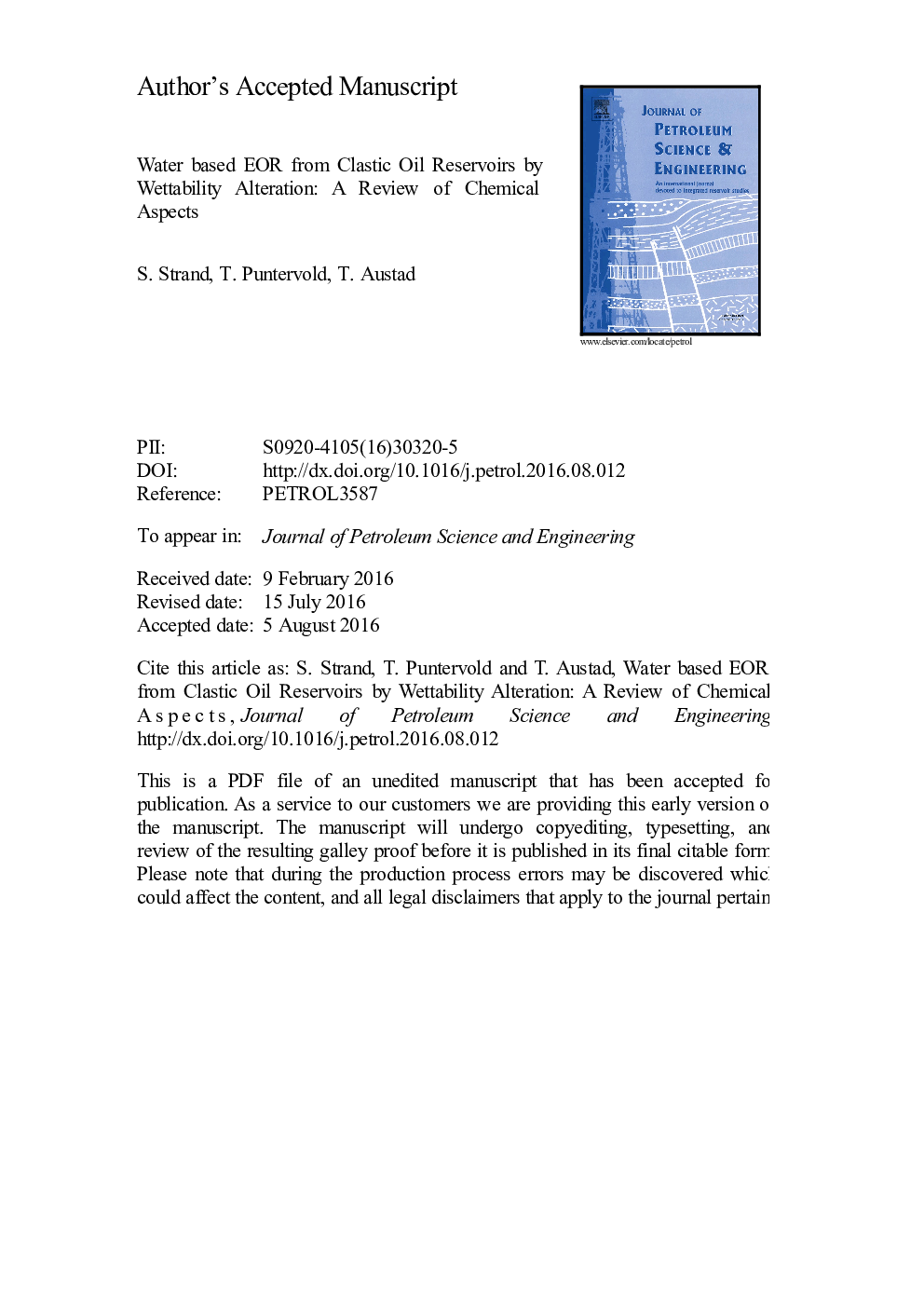| Article ID | Journal | Published Year | Pages | File Type |
|---|---|---|---|---|
| 8126050 | Journal of Petroleum Science and Engineering | 2016 | 30 Pages |
Abstract
Water flooding of oil reservoirs has been, and still is, the most important technique to increase oil recovery from both carbonate and clastic oil reservoirs. Significant improvements in the general understanding of the wetting properties of oil reservoirs have been the fundament for a lot of research during the last 15-20 years with the objective to optimize the oil recovery by wettability modification. The ion composition of the injected water can modify the wetting properties of the porous rock during the production time, and improve the displacement of oil. Such an EOR technique is environmentally friendly, because no external chemicals are added, and significant extra oil amounting to 5-20%OOIP have been reported, both in the laboratory and in field pilots. Therefore, water based EOR by wettability modification has received great interest among oil companies and researchers. A large number of different mechanisms have been suggested for this EOR process. This paper is a chemical review of the EOR technique called Smart Water flooding, which also include aspects of low salinity flooding in clastic reservoirs. The review is divided into four main parts; (1) The most important wetting parameters for the different phases, oil, brine and rock, are presented, (2) The symbiotic interaction between the different wetting parameters on the initial wetting properties is discussed, (3) The chemical mechanism for observing “Smart Water” EOR effects at different initial wetting conditions is presented, and (4) The suggested chemical mechanism is verified by lab and field data.
Related Topics
Physical Sciences and Engineering
Earth and Planetary Sciences
Economic Geology
Authors
S. Strand, T. Puntervold, T. Austad,
